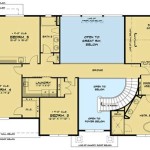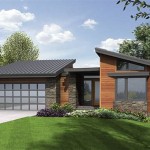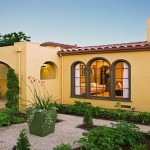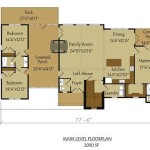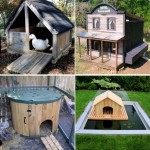A panic room, also known as a safe room, is a secure space within a home designed to provide occupants with protection during emergency situations. These rooms are typically constructed with reinforced walls, heavy-duty doors, and advanced security systems to withstand forced entry or intrusion.
Panic rooms find practical application in various scenarios. They offer a refuge during natural disasters, such as tornadoes or hurricanes, by providing a safe haven against strong winds and flying debris. Additionally, these rooms serve as a protective measure against home invasions, providing occupants with a concealed and secure space to until help arrives.
House plans with panic rooms have become increasingly sought-after by homeowners seeking enhanced home security. These plans outline the design and construction specifications for homes that incorporate dedicated panic rooms. By understanding the considerations and requirements involved in designing and building a panic room, homeowners can make informed decisions about incorporating this essential safety feature into their homes.
House plans with panic rooms offer several important considerations for homeowners seeking enhanced home security:
- Concealed location
- Reinforced construction
- Advanced security systems
- Emergency communication
- Air filtration and ventilation
- Adequate lighting
- Supplies and amenities
- Escape routes
Incorporating these elements into a panic room design ensures that occupants have a safe and secure refuge during emergency situations.
Concealed location
Concealing the panic room’s location is crucial for its effectiveness. It should be designed to blend seamlessly with the rest of the house, avoiding any obvious signs or entry points that could compromise its security.
- Discrete entrances: The panic room should have at least two concealed entrances, such as a hidden door disguised as a bookcase or a secret passageway accessible through a closet.
- Camouflaged exterior: If the panic room has any windows, they should be strategically placed and covered with blackout curtains or mirrored glass to prevent detection from outside the house.
- Soundproofing: The panic room should be soundproofed to minimize noise levels and prevent occupants from being heard from outside.
- Limited access: Access to the panic room should be restricted to authorized individuals only, with keypads, biometric locks, or other advanced security measures in place to prevent unauthorized entry.
By carefully considering the concealed location of the panic room, homeowners can ensure that it remains a secret and secure refuge during an emergency.
Reinforced construction
The panic room’s construction plays a vital role in its ability to withstand forced entry or intrusion. Reinforced construction involves employing robust materials and techniques to create a secure and impenetrable space.
- Fortified walls: The walls of the panic room should be constructed with multiple layers of drywall, steel plates, or concrete to prevent unauthorized penetration.
- Reinforced door: The panic room door is a critical component of its security. It should be made of solid steel or composite materials, equipped with multiple locking mechanisms, and reinforced with steel frames and hinges.
- Security glazing: Any windows in the panic room should be fitted with impact-resistant glass or polycarbonate to withstand breakage attempts.
- Environmental protection: The panic room should be designed to provide protection from environmental hazards such as fire and flooding. This may involve installing fire-resistant walls and doors, as well as waterproofing the room to prevent water damage.
By incorporating these reinforced construction elements, homeowners can create a panic room that offers maximum protection and security during emergency situations.
Advanced security systems
Panic rooms are equipped with advanced security systems to provide multiple layers of protection and ensure the safety of occupants.
- Surveillance cameras: Installing surveillance cameras inside and outside the panic room allows occupants to monitor their surroundings and detect any suspicious activity.
- Motion sensors: Motion sensors placed within the panic room can trigger an alarm or alert occupants to any movement or intrusion attempts.
- Glass break sensors: Glass break sensors can be installed on windows to detect any attempts to break through the glass and trigger an alarm.
- Panic buttons: Panic buttons located inside the panic room provide occupants with a quick and easy way to summon help in case of an emergency.
- Remote monitoring: Panic rooms can be integrated with remote monitoring systems that allow authorized individuals to monitor the room’s status and receive alerts in case of an intrusion or emergency.
These advanced security systems work together to create a comprehensive and proactive security solution for panic rooms, ensuring that occupants have the necessary tools to protect themselves and respond effectively to emergency situations.
In addition to the security systems mentioned above, panic rooms can also be equipped with advanced technologies such as biometric locks, which require fingerprint or facial recognition for access, and two-way communication systems that allow occupants to communicate with the outside world in case of an emergency.
By incorporating these advanced security systems into house plans with panic rooms, homeowners can create a highly secure and protected refuge for themselves and their families during emergency situations.
Emergency communication
In the event of an emergency situation, it is crucial for occupants of a panic room to be able to communicate with the outside world. House plans with panic rooms should include provisions for reliable and effective emergency communication systems.
- Landline telephone: A landline telephone is a reliable means of communication during emergencies, as it does not rely on cellular networks or internet connectivity. Panic rooms should be equipped with a dedicated landline telephone connected to a reliable phone line.
- Cellular signal booster: In areas with weak cellular reception, a cellular signal booster can be installed to enhance signal strength and ensure that occupants can make and receive calls from their mobile phones.
- Two-way radio: A two-way radio provides a means of communication with the outside world even in the event of a power outage or landline disruption. Panic rooms should be equipped with a two-way radio and extra batteries.
- Internet connectivity: If the panic room has internet connectivity, occupants can use a VoIP phone or video conferencing to communicate with emergency responders or family members remotely. It is important to ensure that the internet connection is reliable and has a backup power source.
By incorporating these emergency communication systems into house plans with panic rooms, homeowners can ensure that occupants have the ability to call for help and communicate with the outside world during an emergency situation.
Air filtration and ventilation
Proper air filtration and ventilation are essential for maintaining a healthy and safe environment inside a panic room. Panic rooms are typically sealed off from the rest of the house for security purposes, which can lead to poor air quality and a lack of fresh air. To address this, house plans with panic rooms should include provisions for adequate air filtration and ventilation.
Air filtration is important for removing harmful contaminants from the air inside the panic room. These contaminants can include dust, pollen, pet dander, and other allergens. A high-quality air filtration system can help to improve air quality and reduce the risk of respiratory problems for occupants.
Ventilation is equally important for providing fresh air and removing stale air from the panic room. A well-ventilated panic room will help to prevent the build-up of carbon dioxide and other harmful gases. It will also help to regulate temperature and humidity levels, creating a more comfortable environment for occupants.
To ensure proper air filtration and ventilation, house plans with panic rooms should include the following:
- Air filtration system: A high-quality air filtration system should be installed in the panic room to remove harmful contaminants from the air.
- Ventilation system: A ventilation system should be installed to provide fresh air and remove stale air from the panic room. The ventilation system should be designed to maintain a comfortable temperature and humidity level inside the room.
- Emergency ventilation: In the event of a power outage or other emergency situation, it is important to have a backup ventilation system in place. This system can be as simple as a battery-operated fan that can be used to circulate air inside the panic room.
By incorporating these air filtration and ventilation measures into house plans with panic rooms, homeowners can ensure that occupants have a safe and healthy environment to shelter in during an emergency situation.
Adequate lighting
Adequate lighting is essential for any room, but it is especially important for panic rooms. In an emergency situation, occupants need to be able to see clearly in order to operate security systems, communicate with the outside world, and defend themselves if necessary.
- General lighting: The panic room should have general lighting that provides bright and even illumination throughout the room. This can be achieved with recessed lighting, ceiling lights, or wall-mounted fixtures.
- Task lighting: In addition to general lighting, the panic room should also have task lighting that provides focused illumination for specific areas, such as the security system keypad, communication devices, and medical supplies. This can be achieved with desk lamps, floor lamps, or under-cabinet lighting.
- Emergency lighting: In the event of a power outage, the panic room should have emergency lighting that provides backup illumination. This can be achieved with battery-powered flashlights, lanterns, or glow sticks.
- Exterior lighting: If the panic room has any windows, it is important to have exterior lighting that illuminates the area around the windows. This will help to deter intruders and make it more difficult for them to break into the room.
By incorporating these lighting measures into house plans with panic rooms, homeowners can ensure that occupants have adequate lighting to navigate the room, operate security systems, and defend themselves during an emergency situation.
Supplies and amenities
Food and water
In the event of an emergency, it is important to have a supply of food and water that will last for several days. The amount of food and water needed will vary depending on the number of occupants and the length of time that they may be confined to the panic room. However, a good rule of thumb is to have at least three days’ worth of non-perishable food and water for each person.
Non-perishable food items that are good to have on hand include canned goods, dried fruit, granola bars, and crackers. It is also important to have a can opener and a way to heat food, such as a portable stove or a fire starter.
As for water, it is important to have at least one gallon of water per person per day. This water can be stored in plastic bottles or jugs. It is also a good idea to have a water purification system in case the water supply is contaminated.
First-aid kit
A first-aid kit is an essential item for any panic room. It should contain a variety of supplies to treat minor injuries, such as bandages, antiseptic wipes, pain relievers, and gauze pads. It is also a good idea to have a first-aid manual on hand for reference.
Medications
If any occupants of the panic room have prescription medications, it is important to make sure that they have a sufficient supply on hand. It is also a good idea to have a list of all medications and their dosages in case of an emergency.
Communication devices
In addition to the emergency communication systems that are typically installed in panic rooms, it is also a good idea to have a variety of communication devices on hand, such as a battery-powered radio, a whistle, and a signal mirror. These devices can be used to communicate with the outside world in case the panic room’s primary communication systems are damaged or disabled.
Tools
A basic set of tools can be helpful in a variety of emergency situations. This could include a hammer, a screwdriver, a wrench, and a pair of pliers. These tools can be used to make repairs to the panic room, such as fixing a broken window or door, or to defend against intruders.
Other amenities
In addition to the essential supplies and amenities listed above, there are a number of other items that can make a panic room more comfortable and livable. These items could include a blanket, a pillow, a change of clothes, and a few books or games.
By stocking their panic room with the necessary supplies and amenities, homeowners can ensure that they and their families have what they need to survive and stay comfortable during an emergency situation.
Escape routes
In addition to providing a secure refuge during an emergency, panic rooms should also be designed with escape routes to allow occupants to evacuate the room if necessary. Escape routes can be particularly important in situations where the panic room is compromised, such as a fire or a gas leak.
- Multiple exits: Panic rooms should have at least two exits, located on opposite sides of the room. This provides occupants with multiple options for escape in case one exit is blocked or compromised.
- Concealed exits: At least one of the panic room’s exits should be concealed, such as a hidden door or a secret passageway. This concealed exit can be used to escape the panic room without being detected by intruders.
- Emergency escape hatch: Some panic rooms are equipped with an emergency escape hatch that leads to the outside of the house. This escape hatch can be used to evacuate the panic room in case of a fire or other emergency that blocks the other exits.
- Escape route planning: Homeowners should carefully plan the escape routes for their panic room and make sure that all occupants are familiar with the plan. This includes identifying the location of the exits, the best routes to take, and any potential obstacles or hazards that may need to be overcome.
By incorporating these escape routes into house plans with panic rooms, homeowners can ensure that occupants have multiple options for evacuating the room in case of an emergency.










Related Posts


